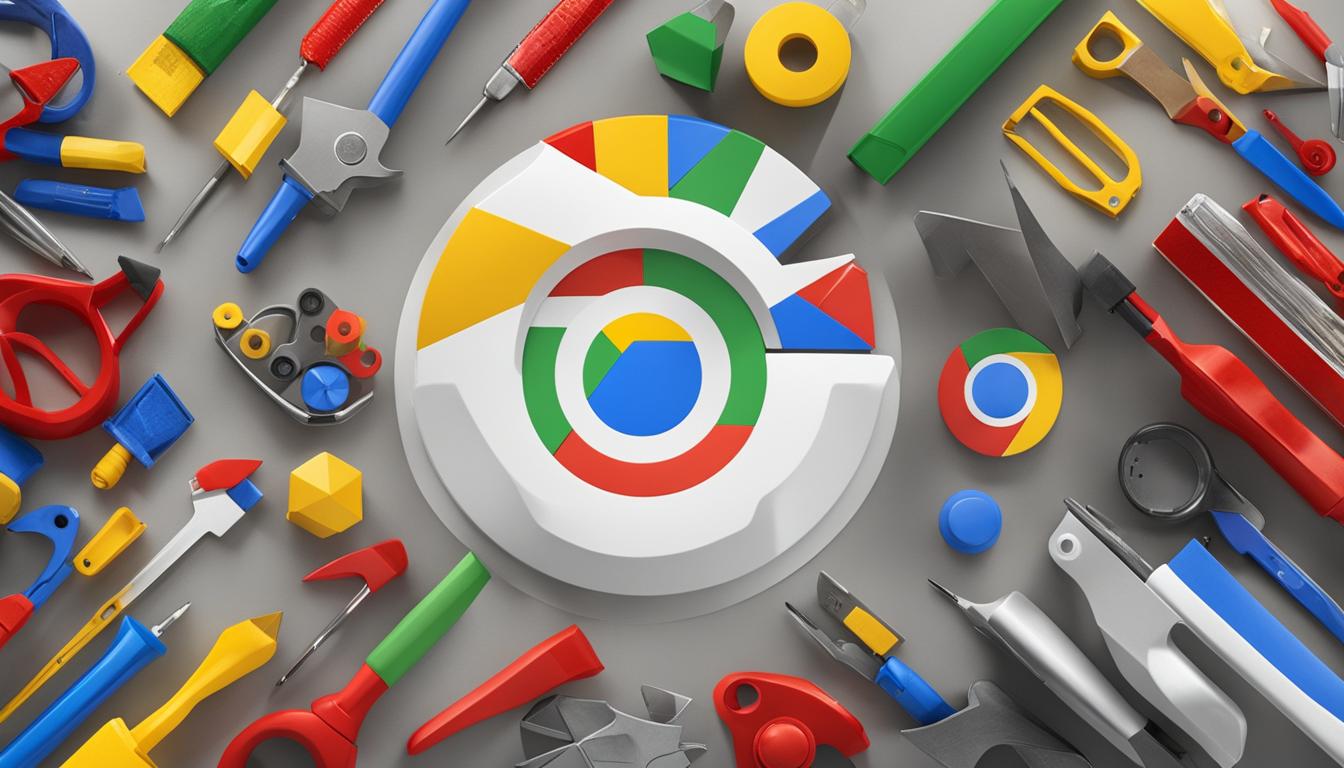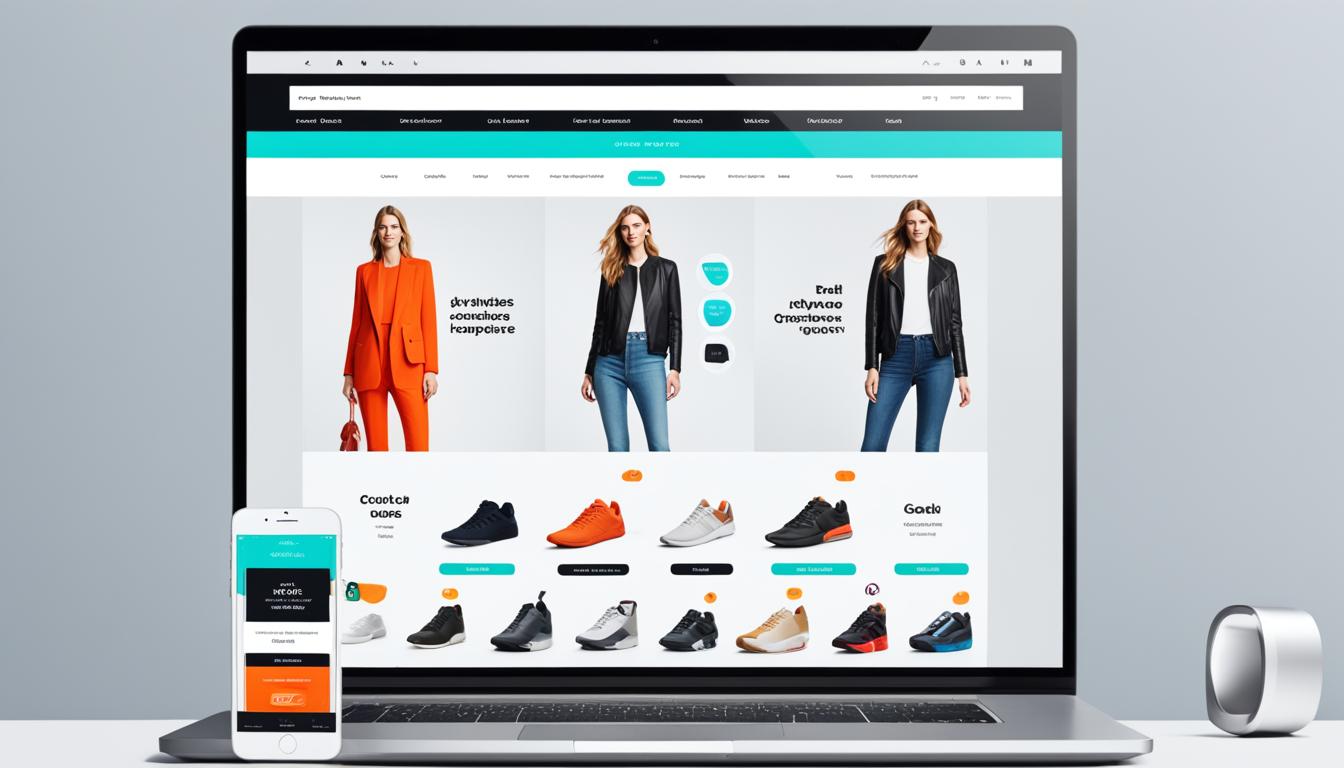How Do I Get My Website On The First Page Of Google?
Did you know that the majority of users never click past the first page of search results on Google? That’s right, if your website isn’t on the first page, you could be missing out on valuable traffic and potential customers. But don’t worry, there are proven strategies and techniques you can use to improve your website ranking and get that coveted first-page spot.
Key Takeaways:
- To increase your website visibility and attract more organic search results, it’s crucial to optimize your website for Google.
- Being on the first page of Google offers numerous advantages, including higher click-through rates, improved brand recognition, and industry authority.
- The cost of achieving a first-page ranking on Google varies depending on the methods you choose, such as pay-per-click advertising or investing in SEO services.
- There are free ways to achieve a first-page ranking on Google by optimizing your website, leveraging Google My Business, and focusing on user experience.
- Targeting long-tail keywords and creating high-quality content are essential for improving your website’s visibility and ranking on Google.
The Advantages of Having Your Business Ranked on the First Page of Google
Having your business ranked on the first page of Google offers numerous advantages. First, it leads to higher click-through rates, as users tend to find what they’re looking for on the first page and don’t often venture to the second page. This increased visibility translates into a higher likelihood of attracting potential customers to your website.
Furthermore, appearing on the first page builds better brand recognition, credibility, and visibility for your business. When users consistently see your website listed among the top results, it reinforces your brand’s presence in their minds. This brand recognition can significantly impact their purchasing decisions, making them more likely to choose your products or services over those of your competitors.
In addition to brand recognition, ranking on the first page of Google helps establish your business as an industry authority. When your website consistently appears among the top search results, it sends a signal to users that you are a trusted and reliable source of information. This contributes to building a positive reputation and attracting new opportunities within your industry.
Finally, and perhaps most importantly, a first-page Google result attracts better, more qualified leads who are closer to making a purchase. Users who actively search for products or services are more likely to convert into customers when they land on your website. By optimizing your website and ranking on the first page, you can target these highly engaged potential customers and increase your chances of driving sales and revenue.
- Higher click-through rates
- Better brand recognition and visibility
- Enhanced credibility and industry authority
- Attraction of more qualified leads
As you can see, achieving a first-page ranking on Google comes with a multitude of benefits that can significantly impact the success of your business. In the following sections, we will explore various strategies and techniques to help you improve your website’s ranking and maximize the advantages of being on the first page of Google.
The Cost of Being on the First Page of Google
When it comes to achieving a first-page ranking on Google, there are various methods to consider. One common approach is pay-per-click (PPC) advertising through Google Ads. While this method requires a financial investment, you have the flexibility to set a budget that works for you. The cost of PPC advertising depends on factors such as the number of competitors bidding on the same keywords, the quality of your ads compared to competitors, and how much your competitors are bidding on those keywords.
Another way to secure a first-page ranking is through organic search engine optimization (SEO). This method involves optimizing your website and business listings to improve visibility in organic (non-paid) search results. While organic SEO doesn’t directly incur advertising costs, it does involve expenses related to site maintenance, content production, and professional SEO services.
Let’s take a closer look at the different cost factors associated with each method:
Pay-Per-Click Advertising
PPC advertising allows you to bid on relevant keywords and pay only when users click on your ads. The cost per click (CPC) can vary depending on keyword competition and the quality score of your ads. Factors that influence the cost of first-page ranking through PPC advertising include:
- Number of Competitors: The more competitors bidding on the same keywords, the higher the cost.
- Ad Quality: Google evaluates the relevance and quality of your ads. Higher-quality ads can result in better ad positioning at a lower cost.
- Competitor Bids: The amount your competitors are willing to bid on keywords also affects the cost. Highly competitive industries may require higher bids to secure a first-page ranking.
By carefully managing your PPC campaigns and optimizing your ad quality, you can control and optimize the cost of achieving a first-page ranking through pay-per-click advertising.
Organic SEO
Organic SEO aims to improve your website’s visibility in organic search results through strategic optimizations and best practices. While the cost of achieving a first-page ranking through organic SEO doesn’t involve direct advertising expenses, there are still costs to consider:
- Site Maintenance: Regular updates, bug fixes, and security measures are essential for maintaining an optimized website.
- Content Production: Creating high-quality, keyword-optimized content requires time and resources.
- Professional SEO Services: Hiring an experienced SEO professional or agency can provide specialized expertise and strategies to improve your rankings.
Investing in site maintenance and professional SEO services can help ensure your website is optimized for search engines and has the best chance of achieving a first-page ranking organically.
Understanding the cost factors associated with both PPC advertising and organic SEO is crucial for making informed decisions about your search engine rankings. By carefully considering your budget, goals, and resources, you can choose the method that aligns best with your business needs and maximizes your chances of success.

| Method | Cost Factors |
|---|---|
| Pay-Per-Click Advertising |
|
| Organic SEO |
|
Ways to Achieve a Free First-Page Ranking on Google
When it comes to ranking on the first page of Google, you don’t always have to invest a fortune. There are several free strategies that can help you achieve a coveted first-page ranking. Here are some effective ways to boost your website’s visibility without breaking the bank:
- Optimize Your Google My Business Account: Claim your business on Google My Business and optimize your profile by providing accurate and detailed information. This will help your business appear in local search results and improve your chances of ranking on the first page.
- Target Local-Based Search Terms: Add location-specific keywords to your website’s key pages and incorporate them into your marketing content. This will help Google identify your business as relevant to local searches, increasing your chances of ranking higher for local-based search queries.
- Follow Mobile-First Best Practices: Since mobile devices account for a significant portion of internet traffic, it’s crucial to optimize your website for mobile users. Follow Google’s mobile-first best practices, such as using responsive design, optimizing page load speed, and ensuring a seamless mobile browsing experience.
- Encourage Customer Reviews: Customer reviews play a significant role in establishing your business’s credibility and attracting potential customers. Encourage your satisfied customers to leave reviews on platforms like Google or Yelp. Responding to reviews shows your engagement and enhances your online reputation.
- Create High-Quality Content: Providing valuable and informative content is essential for improving your search rankings. Focus on creating content that addresses your audience’s needs and interests. Offer expert advice, share industry insights, and solve common problems. High-quality content is more likely to attract backlinks, improve user experience, and increase your chances of ranking on the first page.
| Free Strategies for First-Page Ranking | Benefits |
|---|---|
| Optimize Google My Business Account | Improved visibility in local search results |
| Target Local-Based Search Terms | Increased relevance for local searches |
| Follow Mobile-First Best Practices | Better user experience for mobile users |
| Encourage Customer Reviews | Enhanced credibility and reputation |
| Create High-Quality Content | Improved user engagement and backlink opportunities |
By implementing these free strategies, you can optimize your website and increase your chances of achieving a first-page ranking on Google. Remember to focus on providing valuable content, enhancing user experience, and leveraging local-based search terms. These efforts, combined with a well-optimized Google My Business account and positive customer reviews, can significantly improve your online visibility and attract more potential customers.

Develop a Mastery of Long-Tail Keywords
Understanding how people use search engines to find what they’re looking for is crucial to achieving a top Google ranking. While short and generic keywords have their importance, long-tail keywords play a significant role in driving specific and targeted traffic to your website. These longer and more specific phrases make up a substantial portion of search engine queries.
By targeting long-tail keywords that are relevant to your business, you can increase the chances of attracting highly convertible traffic. These keywords often indicate that the user is further along in the buying process and more likely to make a purchase or take a desired action. This means that by optimizing your website and content for long-tail keywords, you can improve your website’s visibility and increase its ranking on Google.
Developing a mastery of long-tail keywords involves conducting thorough keyword research to identify the most relevant and valuable phrases for your niche. It’s important to find the balance between highly competitive keywords that bring in a significant amount of traffic and less competitive keywords that have a higher chance of ranking well.
Once you have identified the right long-tail keywords, incorporate them strategically throughout your website, including in your meta tags, headers, and content. However, it’s crucial to use them naturally and not resort to keyword stuffing, which can negatively impact your rankings.
Remember, the goal is to provide valuable, high-quality content that is relevant to the user’s search intent. By mastering long-tail keywords and tailoring your content to match what users are looking for, you can attract specific and targeted traffic that is more likely to convert into customers or clients.
Create Next-Level Content
When it comes to achieving top rankings on Google’s search engine results page (SERP), the quality of your content is paramount. To ensure success, it’s crucial to create content that not only answers users’ questions but also provides real value.
Google favors long-form content that goes deep into topics and provides thorough information. To make your content more readable and organized, use headings and subheadings. This helps both users and search engines quickly understand the structure of your content.
Incorporate keywords naturally throughout your content. Stick to the topic and avoid keyword stuffing, as this can negatively impact readability and user experience. Instead, focus on providing high-quality and relevant information that caters to your target audience’s needs and interests.
In addition to text, consider incorporating multimedia elements into your content. Images, videos, and audio can enrich the user experience and make your content more engaging. Visual elements also break up the text and add visual appeal to your page, enhancing its overall quality.
Remember, the key to creating next-level content is to prioritize content quality, ensure long-form depth, improve readability, naturally use keywords, and include multimedia elements. By following these best practices, your content will have a higher chance of ranking well on Google and providing a valuable experience for your audience.
Target Google SERP Features
As Google’s search results continue to evolve, it’s important to understand and target the various SERP features that can enhance your website’s visibility. These features include rich snippets, feature snippets, and answer boxes, which provide additional opportunities to rank well and catch users’ attention.
Rich snippets are additional information that appears alongside a search result, providing a preview of what users can expect when they click through. By optimizing your content to include relevant structured data, such as reviews, ratings, and event information, you can increase the chances of your website appearing as a rich snippet.
Feature snippets are concise summaries that directly answer users’ queries. These snippets appear at the top of the search results, above the organic listings. By creating content that addresses common questions and provides clear and concise answers, you can increase your chances of appearing as a feature snippet.
Answer boxes are similar to feature snippets, but they provide a more detailed response to a specific question. Answer boxes are often displayed as boxed content with a direct answer and may also include additional information, such as lists or steps. By understanding the types of questions your target audience asks and providing comprehensive answers, you can optimize your content to appear in answer boxes.
Targeting these SERP features is crucial to increasing the visibility of your content and driving organic traffic to your website. However, it’s important to note that user experience (UX) plays a significant role in determining whether your content will be selected for these features. Google prioritizes content that is not only relevant and informative but also provides a positive user experience.
To improve your chances of targeting SERP features and enhancing user experience, consider the following strategies:
- Ensure your website is optimized for mobile devices, as mobile-friendly sites are more likely to be featured in SERP features.
- Create content that is easy to read and navigate, using clear headings, subheadings, and bullet points.
- Include relevant and helpful links within your content to provide additional information and resources to users.
- Enrich your content with visuals, such as images and videos, to make it more engaging and informative.
- Improve your website’s page load time to enhance the overall user experience.
By implementing these strategies, you can optimize your website for SERP features, increase its visibility on Google, and provide users with a positive and engaging experience.
Focus Heavily on User Experience
Achieving a first-page ranking on Google requires more than just getting users to click on your search result. To truly succeed, you must prioritize user experience and create a website that delivers a top-tier browsing experience.
A key metric to consider is the bounce rate, which measures the percentage of users who leave your site after viewing only one page. By providing a seamless and engaging user experience, you can minimize bounce rates and improve your chances of ranking well.
One important aspect of user experience is aligning your title tag and meta description with the actual content on your pages. This ensures that users get what they expect when they click on your search result, leading to greater satisfaction and engagement.
In addition, incorporating helpful links, graphics, and videos that add value can further enhance the user experience. These elements not only make your content more informative and engaging, but also keep users on your site longer, signaling to search engines that your site is worth ranking highly.
Optimizing your website’s page load time is another crucial factor for positive user experience. A fast-loading site keeps users from getting frustrated and clicking away, while also sending positive signals to search engines about your site’s performance.
Lastly, don’t forget to optimize your website for mobile devices. With a growing number of users accessing the internet via smartphones and tablets, ensuring that your site is mobile-friendly is essential for a positive user experience and higher rankings on Google.
FAQ
How do I get my website on the first page of Google?
What are the advantages of having my business ranked on the first page of Google?
How much does it cost to be on the first page of Google?
Are there any free ways to achieve a first-page ranking on Google?
How important are long-tail keywords in improving website visibility on Google?
How does content contribute to achieving a top Google ranking?
What are Google SERP features, and how can I target them?
How important is user experience for achieving a first-page ranking on Google?
- SEO for Entry Door Services - April 24, 2025
- Boosting Property Value: Why Halifax Windows and Doors Are a Smart Investment - April 24, 2025
- The Business Cost of Injury: Why Personal Injury Law Matters in a Financial World - April 16, 2025





















Post Comment
You must be logged in to post a comment.